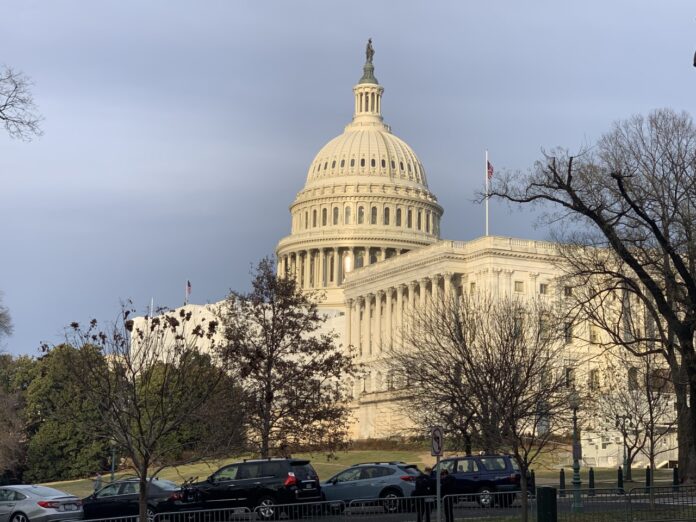The iconic US Capitol, which houses the two chambers of Congress, reopened to the public on January 3, 2023. The order to close it to outside visitors came in March 2020 at the behest of then-House Speaker Nancy Pelosi (D-CA) amid the hurried national lockdown surrounding Covid. In the almost three years since that time, only members of Congress, their staffs, or those on official business were allowed inside the Capitol or its adjoining Congressional Office Buildings. Constituents were not allowed to visit the offices of their representatives and the popular tours of the historic structure were banned. Moreover, members of Congress could join meetings by teleconferencing and could vote by proxy. Enjoying that convenience, a number of members of Congress often voted remotely from their home districts or even while overseas on vacation.
After the infamous January 6, 2021 riot at the Capitol, a series of fences and barriers were erected around the area, which critics thought made the site appear more like a military base than “the people’s house” that the founders envisioned.
The Democrat-led 117th Congress, that began in January 2021 and expired at noon on January 3, 2023, existed for its entire two years under those unusual circumstances.
However, as an example of the saying “Elections have consequences,” the new Republican majority that last November narrowly won a majority in the House pledged to reopen the Capitol complex to visitors and constituents as soon as the 118th Congress was sworn in, which occurred today. The first official act of the 118th Congress was an opening prayer by the House Chaplain.
In addition to tours resuming of the impressive building and constituents visiting with their representatives, the new GOP leadership has pledged to end all teleconference meetings and proxy voting. After the three-year hiatus, members of Congress are once again mandated to attend meetings, debate, and vote in-person.
The House of Representatives entered a phase of turbulence and uncertainty immediately upon convening, when the new GOP majority was unable to quickly choose a Speaker of the House. Since the House has 435 members, it takes 218 to choose a Speaker. Among the three Republican members of the House representing Western Virginia, Morgan Griffith (9th) and Ben Cline (6th) voted for Kevin McCarthy (R-CA) as speaker, while Bob Good (5th) was among the small number that kept McCarthy from reaching 218.
A busload of Rep. Cline’s constituents from the Roanoke and Shenandoah Valleys made the trip to Washington to view the proceedings via TV in a Congressional meeting room and then toured the historic Capitol.
In general, McCarthy supporters believed the GOP needed to show unity so they could choose a Speaker and start conducting business on Day One. McCarthy detractors, in contrast, view him as representing too much of the Washington status quo and believe a bigger change of direction and leadership is needed.
Today’s drama, while newsworthy and unusual, is not unprecedented. The last time multiple votes were required to find a House Speaker was exactly 100 years ago, in 1923, when House members went through nine ballots until agreeing upon a Speaker.
–Scott Dreyer

